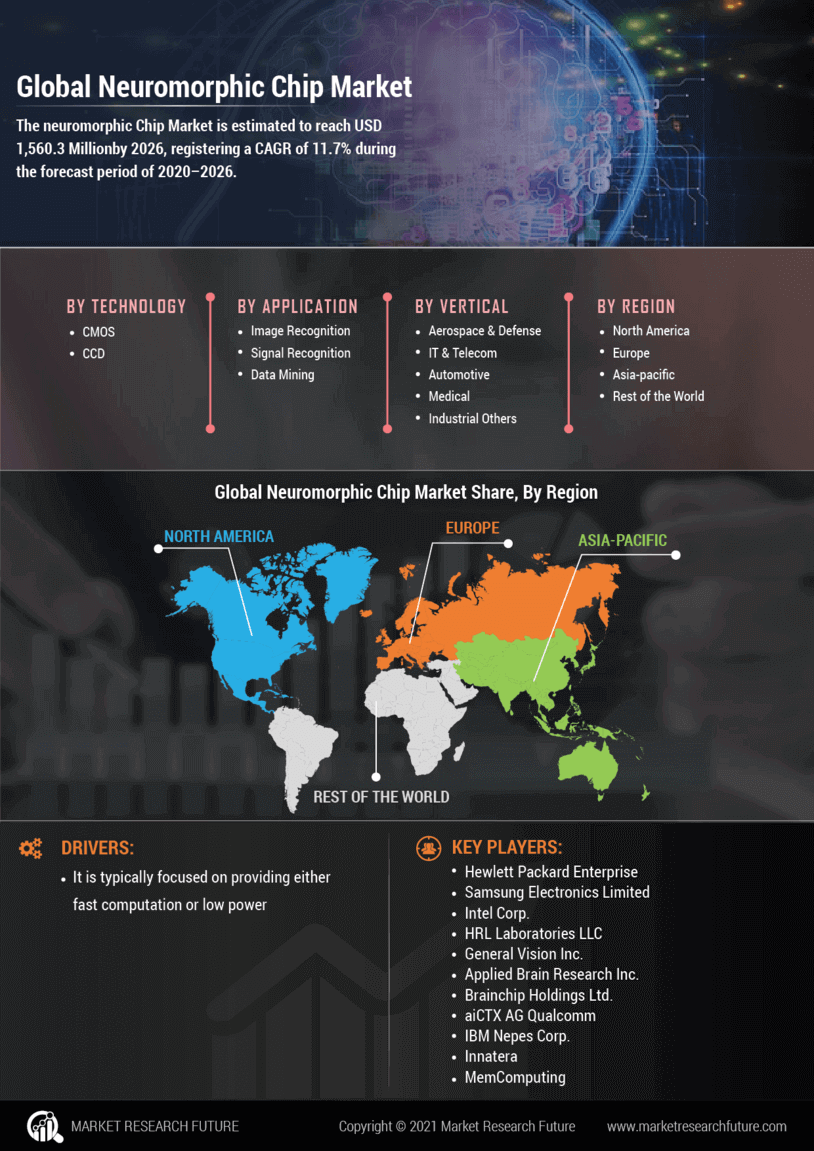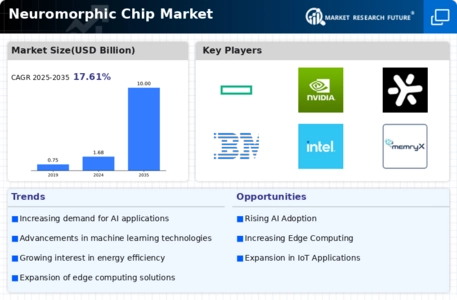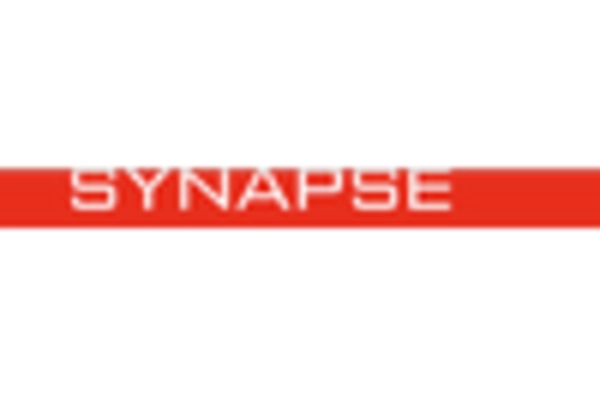The Neuromorphic Chip Market Market is currently undergoing a transformative phase driven by advancements in artificial intelligence and machine learning technologies. Neuromorphic chips are designed to mimic the neural structures of the human brain, leading to highly efficient processing capabilities for tasks that require deep learning and pattern recognition.
In this competitive landscape, various players are striving to innovate and differentiate their offerings to capture a larger market share. Companies are focusing on developing specialized hardware that caters to specific applications, such as robotics, autonomous vehicles, and data centers.
Additionally, the collaboration between academia and industry is fostering an environment rich in research and development, resulting in rapid technological advancements that are reshaping the market dynamics.
As the demand for intelligent processing capabilities continues to increase, the competition within the Neuromorphic Chip Market is expected to intensify, with companies exploring new partnerships, mergers, and acquisitions to strengthen their market position.
Hewlett Packard Enterprise has carved out its niche in the Neuromorphic Chip Market with a robust portfolio focused on high-performance computing and advanced computing systems. The company leverages its extensive experience in enterprise solutions to develop neuromorphic technologies that cater to various sectors, including healthcare and automotive.
Hewlett Packard Enterprise is recognized for its ability to integrate neuromorphic chips into existing IT infrastructures, enhancing data processing capabilities and efficiency. The company's strengths lie in its strong brand recognition, strategic partnerships, and a focus on research and development, which have positioned it favorably to stay competitive.
By utilizing cutting-edge research, the company is able to offer innovative solutions that meet the ever-evolving needs of the market, solidifying its presence in a highly competitive environment.
NVIDIA stands out in the Neuromorphic Chip Market as a leading player known for its high-performance graphics processing units and artificial intelligence solutions. The company has expanded its offerings to include neuromorphic computing technologies that cater to complex data processing needs for various applications, including autonomous machines and robotics.
NVIDIA’s strengths are prominently showcased in its advanced development platforms and software ecosystems, which facilitate easier integration for developers and researchers. The company is proactive in forging strategic partnerships and engaging in mergers and acquisitions to enhance its portfolio and capabilities in neuromorphic technologies.
By leveraging its expertise in AI and deep learning, NVIDIA continues to drive innovation in this space while maintaining a strong market presence globally.
Its commitment to cutting-edge technology and support for artificial intelligence research positions NVIDIA as a formidable competitor in the neuromorphic chip arena, catering to the increasing demand for intelligent computing solutions across numerous industries.


 $IMAGE3_HERE$
$IMAGE3_HERE$














Leave a Comment